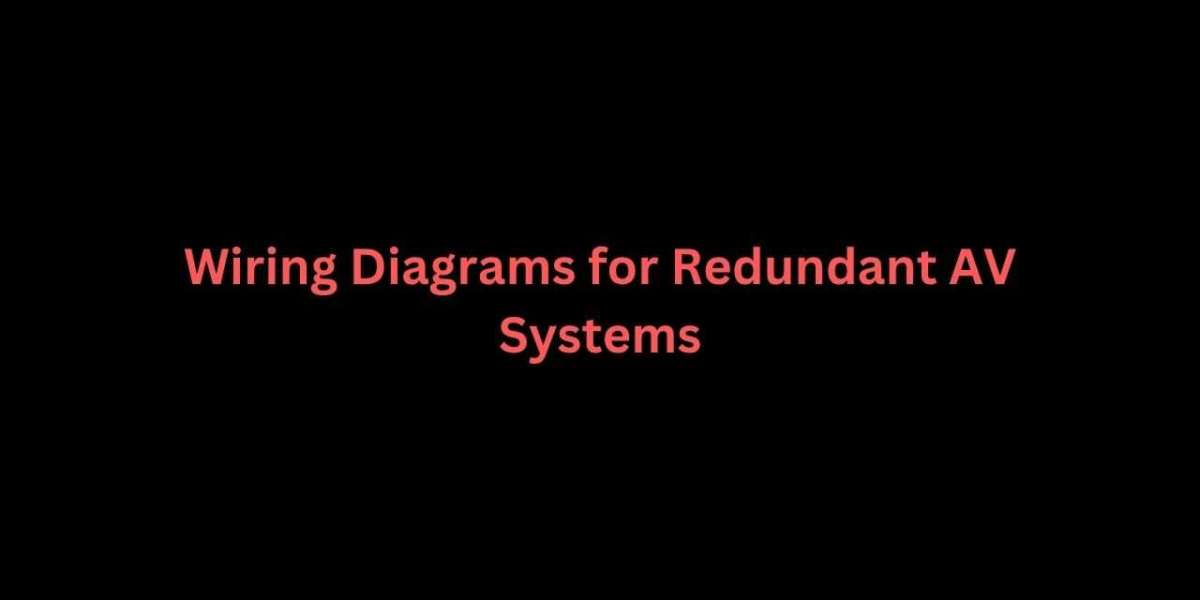In today’s fast-paced, high-demand environments, downtime is not an option. Whether it's a broadcast studio, conference center, control room, or house of worship, AV systems must remain reliable and operational under all circumstances. That’s where redundancy becomes crucial. XTEN-AV understands the importance of reliability, which is why it supports detailed AV design with tools that streamline the creation of robust systems. One of the most essential aspects of planning redundancy is a clear, precise, and professionally drawn set of AV Wiring Diagrams.
In this blog, we’ll explain what redundant AV systems are, why they matter, and how to design and document them effectively using industry best practices.
Introduction to Redundant AV Systems
A redundant AV system is designed with backup components or pathways to maintain uninterrupted service even if a primary element fails. Redundancy can apply to power, signal paths, network connectivity, or even entire subsystems. Redundant designs are especially critical in applications where AV availability is mission-critical—think command centers, government control rooms, large-scale events, or digital signage networks.
There are two types of redundancy commonly used in AV systems:
Active Redundancy: Both primary and backup systems run simultaneously. If the main one fails, the backup instantly takes over with no perceptible loss.
Passive Redundancy: The backup system remains idle until it is triggered manually or automatically when a failure is detected.
Regardless of which type you use, proper documentation is essential to ensure clarity and successful deployment.
Why Wiring Diagrams Are Crucial for Redundancy
Clear AV Wiring Diagrams serve as the foundation of any redundant system. They allow installers, integrators, and end-users to understand signal flows, power distribution, and failover strategies. More importantly, they help identify potential single points of failure that might undermine your efforts at redundancy.
Without accurate diagrams, even the most well-thought-out redundant system can become a troubleshooting nightmare when a failure occurs.
Elements to Include in Redundant AV Wiring Diagrams
Here’s what every effective diagram for redundant systems should contain:
1. Source Redundancy
If your system includes multiple video or audio sources, illustrate how redundancy is achieved. For example, you may use dual video players or parallel audio feeds.
Show how automatic switchers or matrix routing handle failover between sources. Highlight primary and secondary signal paths in different colors or line styles for quick visual identification.
2. Path Redundancy
This includes the cabling and routing that connects sources to displays or speakers. Run parallel cable paths and document both clearly. Label each path as “Primary” or “Backup” and use color coding to differentiate them.
Be sure to mark any switching devices or signal detection mechanisms that control failover from primary to secondary paths.
3. Power Redundancy
If your system uses redundant power supplies, UPS units, or dual power inputs on devices, diagram these clearly. Indicate how power flows to each device and how a backup kicks in if the main supply fails.
Label circuits and breakers, and show how power sources are isolated to prevent cascade failure.
4. Network Redundancy
For AV-over-IP systems, dual network paths are critical. Use two separate switches, routers, or VLANs, and show them in the wiring diagram.
Clearly indicate which devices are connected to each network path and how failover is managed. XTEN-AV allows the use of detailed labeling and layering tools that help visualize network segmentation easily.
5. Control Redundancy
In complex AV systems, control processors often manage everything. Redundant controllers can ensure continuity of operation. Document how each processor is linked, whether one is in standby or both run in parallel.
Your diagram should include failover logic, backup control pathways, and device communication protocols.
Best Practices When Creating Redundant AV Wiring Diagrams
Use Layered Diagrams
With redundancy, the number of connections can be overwhelming. Use software like XTEN-AV to create layered diagrams, so each layer (video, audio, control, power) can be viewed independently or together.Maintain a Consistent Labeling System
Every cable, connector, and device should have a unique ID. Add suffixes like “-P” for primary and “-B” for backup to keep things organized. A clear legend on your AV Wiring Diagrams avoids confusion.Highlight Failure Points
Include notes or callouts that indicate where failure detection mechanisms are installed. This can be software-based detection, hardware sensors, or auto-switchers.Include Test and Monitoring Ports
Label test access points, monitoring equipment, and service loops in your diagram to help technicians diagnose failures efficiently.Regularly Update Your Diagrams
After the system is deployed, any upgrades or replacements should be reflected in the wiring diagrams. An outdated document can lead to costly mistakes during a failure.
Tools to Create Redundant Wiring Diagrams
XTEN-AV’s advanced features are tailor-made for drawing redundant AV systems. With automated connection logic, drag-and-drop components, and intelligent cable labeling, the tool accelerates the creation of complex V Wiring Diagrams.
Other features include:
Real-time collaboration between designers and engineers
Cloud-based version control
Dynamic layout optimization
Integration with manufacturer databases for accurate specs
These capabilities save time and reduce errors while ensuring that redundancy is thoroughly and professionally documented.
Common Mistakes to Avoid
Using a single shared cable run for primary and backup signals
Failing to separate power sources for critical components
Omitting the control logic that triggers failover
Not testing the redundancy system under load conditions
Lack of documentation for switchers, sensors, and logic controllers
Avoiding these errors starts with a well-thought-out design and complete documentation.
Final Thoughts
Redundant AV systems are no longer optional in mission-critical environments—they are a necessity. But redundancy is only as reliable as your documentation. Professionally designed AV Wiring Diagrams ensure that every component, signal path, and failover mechanism is clearly mapped out.
XTEN-AV empowers AV professionals to create detailed, scalable, and compliant diagrams for even the most complex redundant systems. Whether you're building for a broadcast facility or an enterprise operations center, make wiring clarity your top priority.
Redundancy is about preparation. And preparation starts with the right tools, accurate diagrams, and a design-first mindset.
Read more: https://blogsgod.com/signal-path-mapping-in-complex-av-wiring-projects/



